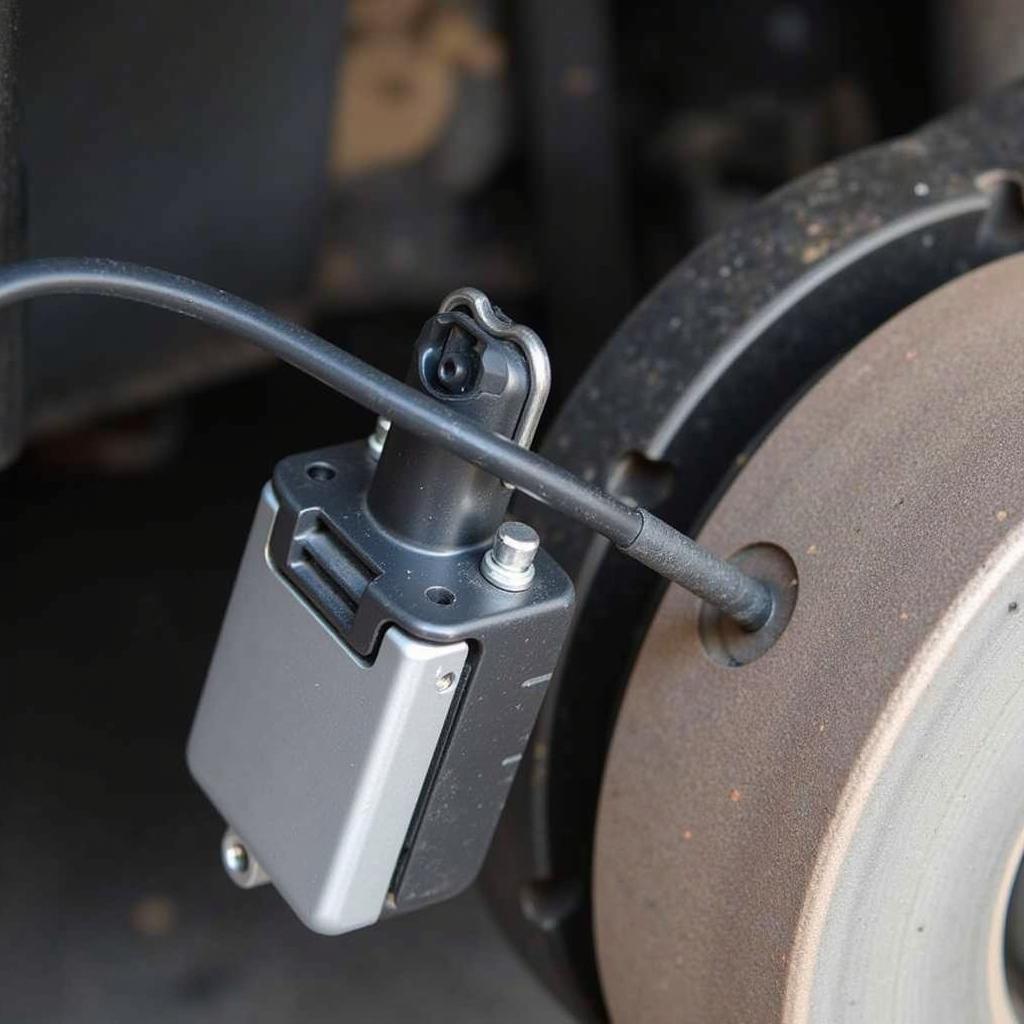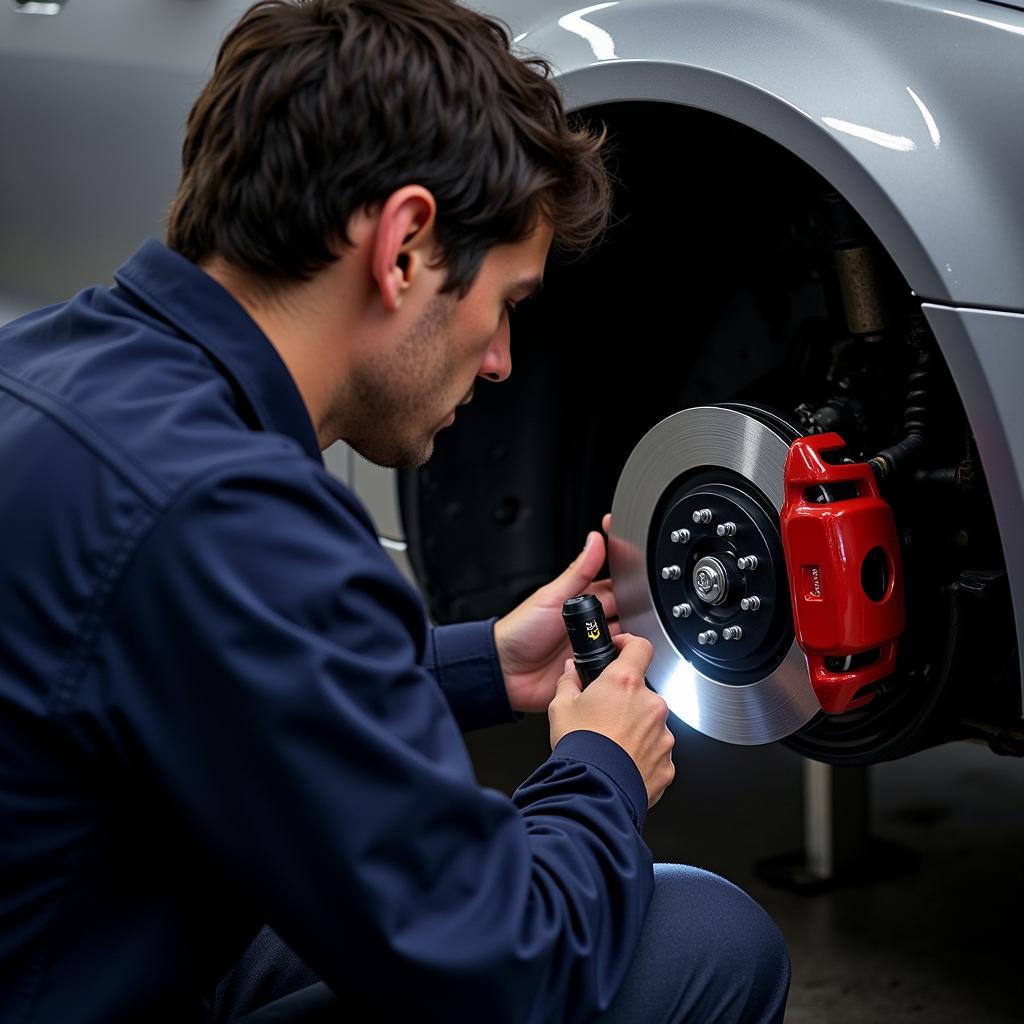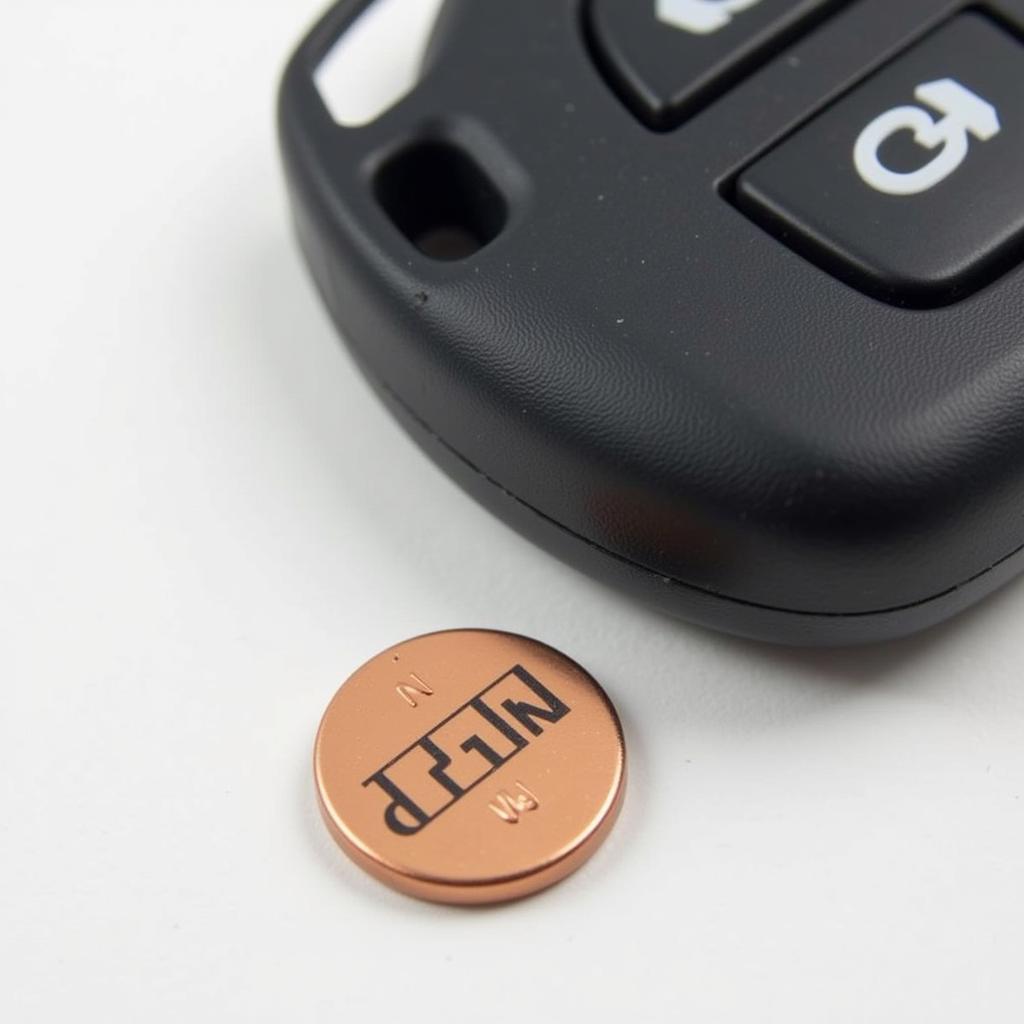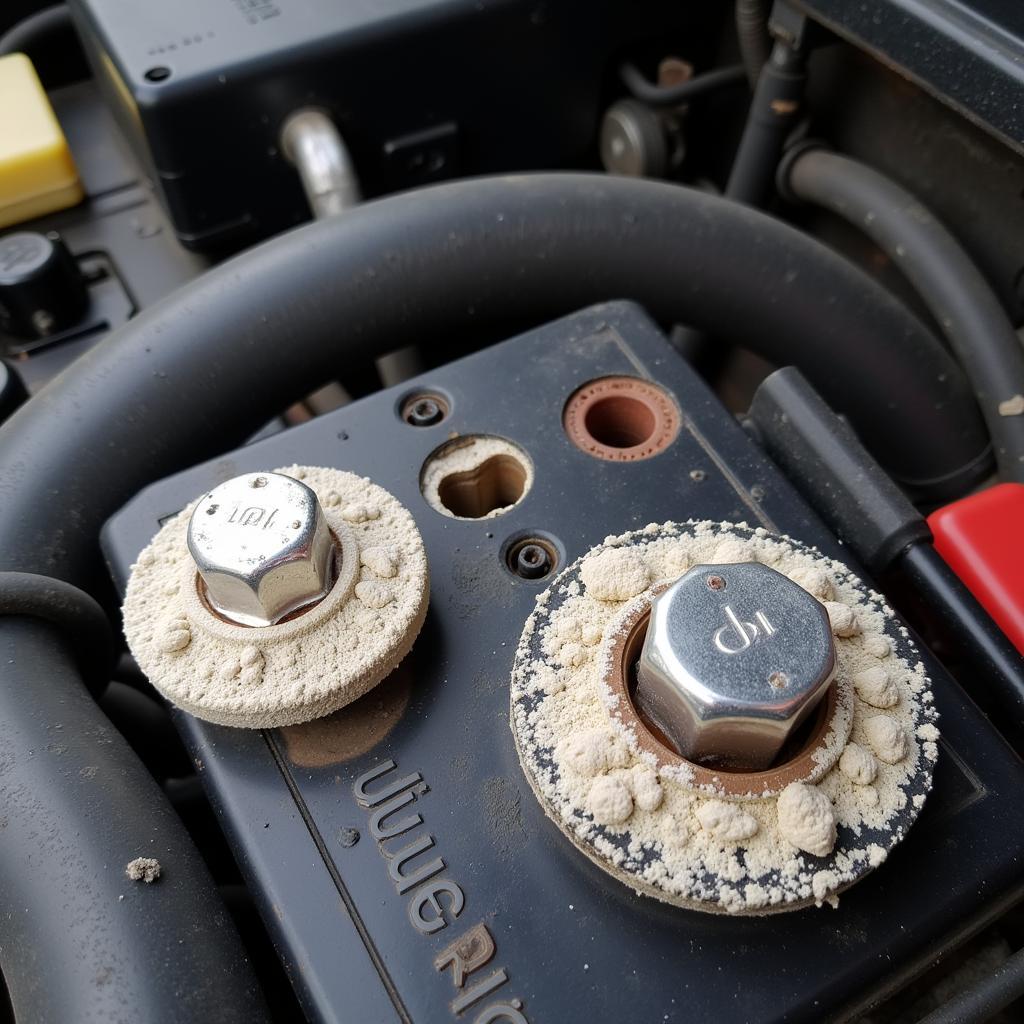The Audi A8 brake pads warning light is an important safety feature that alerts you to potential problems with your braking system. If you see this light illuminated on your dashboard, it’s important to take action immediately. Ignoring the warning light could lead to reduced braking performance and even brake failure, putting you and other road users at risk.
This comprehensive guide will delve into the common reasons behind the Audi A8 brake pads warning light, how to diagnose the issue, and potential solutions to get you back on the road safely.
Understanding Your Audi A8 Brake Pad Sensor
Your Audi A8 utilizes a sophisticated electronic system to monitor brake pad wear. Embedded within the brake pads themselves are small sensors, typically consisting of a wire loop. As you use your brakes, the brake pads naturally wear down. When the pad reaches a predetermined minimum thickness, the sensor wire makes contact with the brake rotor, completing an electrical circuit. This triggers the brake pad warning light on your dashboard.
 Audi A8 Brake Pad Sensor
Audi A8 Brake Pad Sensor
Common Causes of an Illuminated Brake Pad Warning Light
While worn brake pads are the most frequent culprit behind the warning light, there are other potential causes that require attention:
- Worn Brake Pad Sensors: Over time, brake pad sensors can become damaged or corroded, leading to a false positive warning light.
- Faulty Brake Pad Sensor Wiring: A short circuit, open circuit, or damage to the wiring harness connecting the sensor to the vehicle’s electrical system can trigger the warning light.
- Low Brake Fluid Level: Your brake system operates on hydraulic pressure, and low brake fluid level can significantly impact braking performance. A leak in the brake lines or a failing master cylinder can cause this issue.
- Problems with the ABS System: The Anti-lock Braking System (ABS) works in conjunction with your regular braking system. Issues with the ABS module or sensors can sometimes trigger the brake pad warning light.
What to Do When Your Audi A8 Brake Pads Warning Light Turns On
1. Assess the Situation: If the brake pad warning light comes on, pull over to a safe location as soon as possible and assess the situation. Check your brake fluid level and look for any visible signs of a leak.
2. Inspect Your Brake Pads: If you feel comfortable doing so, you can visually inspect your brake pads for wear. Look through the spaces between the spokes of your wheels. The brake pad is the component that rubs against the brake rotor. If the pad material is less than 1/4 inch thick, it’s time for a replacement.
3. Seek Professional Diagnostics: If you are unsure about the cause of the problem, it’s best to have your vehicle diagnosed by a qualified Audi technician. They have the tools and expertise to quickly and accurately identify the issue.
Audi A8 Brake Pad Replacement and Repair Options
-
Brake Pad Replacement: If your brake pads are worn, they will need to be replaced. It is generally recommended to replace the brake pads on both axles at the same time, even if only one side is showing wear. This ensures even braking performance.
-
Brake Rotor Resurfacing or Replacement: If your brake rotors are scored or warped, they will need to be resurfaced or replaced. Resurfacing involves removing a thin layer of metal to create a smooth surface. Replacement is necessary if the rotors are too thin or damaged beyond repair.
-
Brake Fluid Flush: It’s generally recommended to have your brake fluid flushed every 2 years or so. This removes any moisture or contaminants that may have accumulated in the system.
-
ABS System Repair: If the problem lies within your ABS system, your Audi technician can diagnose and repair or replace the faulty component.
 Audi A8 Brake System Inspection
Audi A8 Brake System Inspection
Don’t Ignore the Warning: Prioritizing Your Safety
“Ignoring your brake pad warning light is like ignoring a flashing “check engine” light,” says Mark Schmidt, a veteran Audi mechanic with over 20 years of experience. “While it might seem like a minor inconvenience, it could be a symptom of a serious underlying issue.”
Your Audi A8 brake pads warning light is a crucial safety feature. Addressing the underlying cause of the warning promptly not only ensures your safety but also helps prevent more costly repairs down the line. Regular maintenance and timely repairs will keep your Audi A8 braking system in optimal condition, providing you with peace of mind on the road.
Frequently Asked Questions about Audi A8 Brake Pad Warning Lights
1. Can I drive my Audi A8 with the brake pad warning light on?
While you may be able to drive a short distance, it’s strongly discouraged. Driving with worn brake pads significantly reduces braking performance and increases the risk of an accident.
2. How much does it cost to replace brake pads on an Audi A8?
The cost of brake pad replacement can vary depending on factors like labor rates in your area and the type of brake pads you choose. It’s best to contact a reputable Audi service center or dealership for an accurate quote.
3. How often should I replace my Audi A8 brake pads?
The lifespan of brake pads can vary greatly depending on your driving habits and conditions. As a general guideline, it’s recommended to have your brake pads inspected every 10,000 miles and replaced when they reach the minimum thickness specified in your owner’s manual.
4. Can I replace my Audi A8 brake pads myself?
While it is possible to replace brake pads yourself, it’s a job that requires a certain level of mechanical skill and knowledge. If you are not comfortable working on your car’s braking system, it’s best to leave it to the professionals.
5. What is the difference between the brake pad warning light and the parking brake warning light?
The brake pad warning light indicates an issue with your primary braking system, while the parking brake warning light simply means your parking brake is engaged. If the parking brake warning light stays on after you’ve disengaged the parking brake, it could indicate a problem with the parking brake system.



